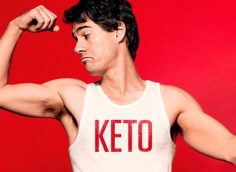The importance of nutritional variety to health is an immutable law, but it's becoming a hard law to satisfy. Consider the following ugly food-manufacturing truths:
- The globe is moving towards a standardized diet that's built almost exclusively around wheat, corn, rice, soybeans, and palm oil. Boring, and not conducive to health, either. Kill us now, please.
- More than 90 percent of the calories taken in by the world come from just 30 plant/animal species.
- About 75% of the food we eat comes from just 12 plants and 5 animal species.
To make matters worse, it's likely that most people aren't aware of the limited numbers of foods we eat, especially if they think like Homer Simpson:
Lisa: I'm going to become a vegetarian.
Homer: Does that mean you're not going to eat any pork?
Lisa: Yes.
Homer: Bacon?
Lisa: Yes.
Homer: Ham?
Lisa: Dad, all those meats come from the same animal.
Homer: Right Lisa, some wonderful, magical animal!
While eating from such a limited menu is never going to be a problem, macronutrient wise, it's certainly likely to be deficient in untold numbers of micronutrients. Obviously, every type of food on God's earth has a different chemical composition and it's just plain logic that we should endeavor to sample as many of these foods as we can to ensure optimal health.
Bodybuilders Are Even Worse
Bodybuilders are generally even worse when it comes to food diversity, or rather, lack of it. It's been my experience that health/body fat conscious lifters compile a short list of "safe" foods (those that aren't too carb-y or too fatty and that hopefully also contain some nutrients) and hang onto them to the bitter end. Oftentimes their diet is so restricted, they make eucalyptus-munching koala bears almost seem like gourmands in comparison.

How to Expand Your Nutrient Menu
It's time to emerge from Plato's dietary cave. Those images you see of broccoli, rice, and skinless chicken dancing against the wall? Either you're high, or they're just the shadows of broccoflower, quinoa, ostrich, and a whole bunch of other foods that you could be eating to expand your nutritional menu.
Here are a few things you could do to flesh out your nutrient intake, starting with the one that everyone knows but rarely follows:
- Use fresh ingredients, preferably from local farmer's markets (they're more likely to have greater nutrient density and diversity).
- Start buying different brands of the foods on your "safe" list. Even a different brand of olive oil or a different variety of tomato or potato likely has a slightly different micronutrient profile.
- Be produce-promiscuous. Vow to add a different fruit or vegetable to your diet every week. Throw some of the obscene looking ones into your cart, the ones that the embarrassed checkout girl has to hold aloft and shout for help in identifying.
- Start shopping at what I call "designer food stores" like Trader Joe's or the unfortunately overpriced Whole Foods. These places are stocked with interesting and even exciting foods few of us knew existed.
For instance, Trader Joe's has frozen turkey meatballs, packaged rice medleys that contain brown rice, red rice, and black barley, "just sauce" turkey Bolognese that you can dump on your preferred carb choice, "10-minute farro (a food comprised of different kinds of wheats) and 10-minute barley, organic, riced cauliflower, and dozens of other food items that could add variety and nutrients to your diet.
Warning!

Just stay away from Trader Joe's Danish speculoos. It's made of crushed gingerbread cookies and delectable fats. While it may not sound all that terrific, believe me, one taste is the embodiment of all temptation. It's Eve's apple, girls in tube tops, and Christmas presents all together in a jar. It comes in a spread and as an ice cream. Beware them both, and all their degree, but most of all beware the spread, for on its brow I see fatness written.





